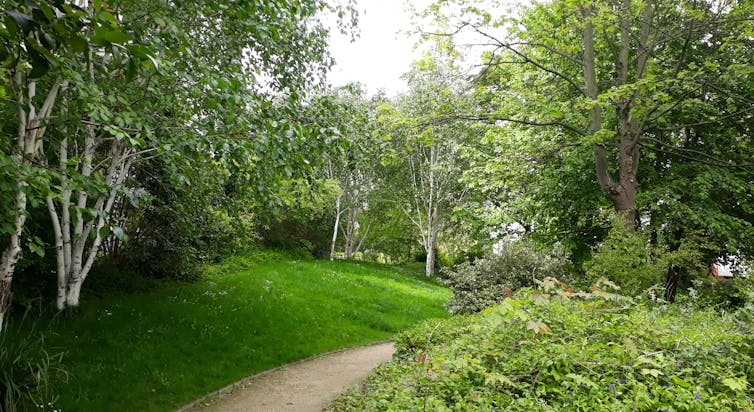
Covid-19, galloping urbanization, danger to biodiversity... the forest has appeared in recent years as the refuge par excellence, a place to re-establish links with the living, an endangered "nature". In a hectic world, what place are we going to give to forests, questions this series. After our previous episodes on the state of forest areas in France , the role of trees in the fields and the regeneration of tropical forests , let's go to the so-called "urban" forests.
In many world cities, like Paris or Montreal – which has embarked on an ambitious program to plant 500,000 trees over the decade 2021-30 – urban forests are trying to grow… more or less . less easily !
These urban greening projects give rise to intense debates which reflect different perceptions and ambiguities on the definition of what an “urban forest” is.
What is an “urban forest”?
If we use the FAO definition in 2017 , an urban forest is:
“A network or system including all wooded areas, groups of trees and individual trees found in urban and peri-urban areas, including, therefore, forests, street trees, trees in parks and gardens, and the trees of abandoned places. »
This definition corresponds to the concept of "urban forest" used in Anglo-Saxon countries, for example in New Zealand in the book by MD Wilcox published in 2012, Auckland's Remarkable Urban Forest , which includes all the trees present in this agglomeration. .
[Nearly 70,000 readers trust The Conversation newsletter to better understand the world's major issues. Subscribe today .]
The different types of urban woody stands
We can distinguish different categories of urban ligneous communities constituting such an “urban forest”, according to their age, extent, structure and composition.
● Relict forest environments
These are remnants of ancient forests of variable extent (several hectares, sometimes tens or hundreds of hectares), which have been preserved in the city center or, most often, on the outskirts. They can be relatively anthropized, degraded and fragmented, like the Bois de Vincennes (995 ha) and Boulogne (846 ha) in Paris, or on the contrary relatively well preserved and of recognized heritage interest, like the alluvial forest. from Neuhof-Illkirch (945 ha) to Strasbourg, classified as a National Nature Reserve.
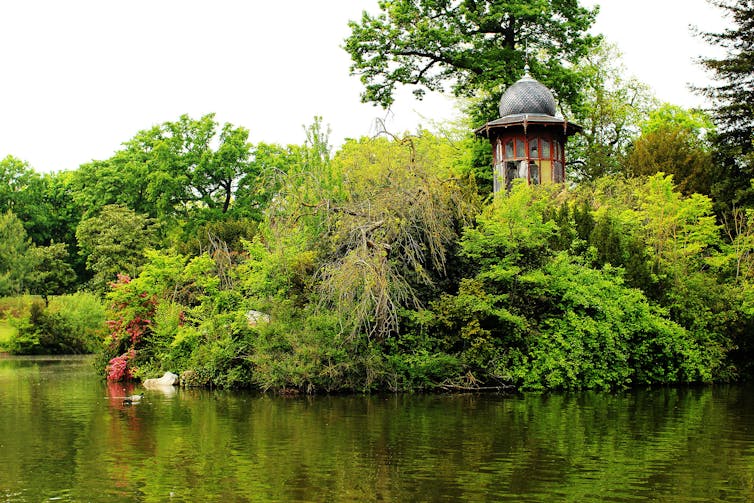
● Linear woody plantations
They correspond to rows of trees in the streets or avenues, which can be more or less tight and dense – up to six parallel rows of trees on certain portions of the boulevards Saint-Jacques or Pasteur in Paris; these “linear plantations” can also be leaned against walls or buildings, or even correspond to real riparian forests along rivers or rivers crossing cities.
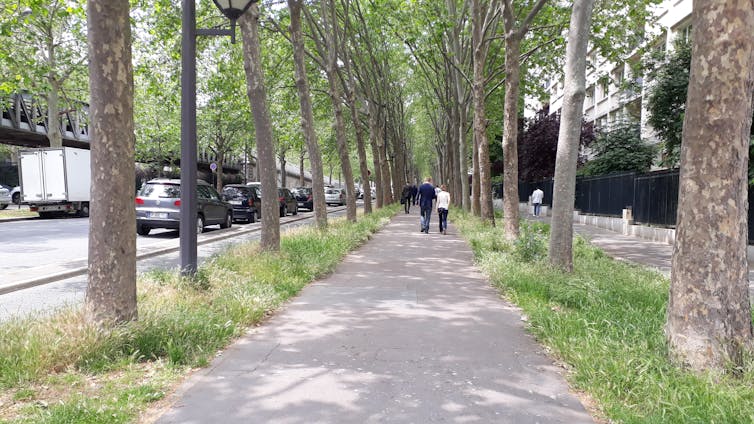
● Woody surface plantations more or less extensive and dense
We see them in urban leisure parks (for example the 1,300 trees over 15 ha, i.e. a density of 87 trees/ha, in Parc Montsouris in Paris) or in cemeteries (the 3,950 trees over 45 ha – i.e. a density of 88 trees/ha – of the Père-Lachaise cemetery in Paris) or large squares or car parks, possibly including denser parts and others, more open.
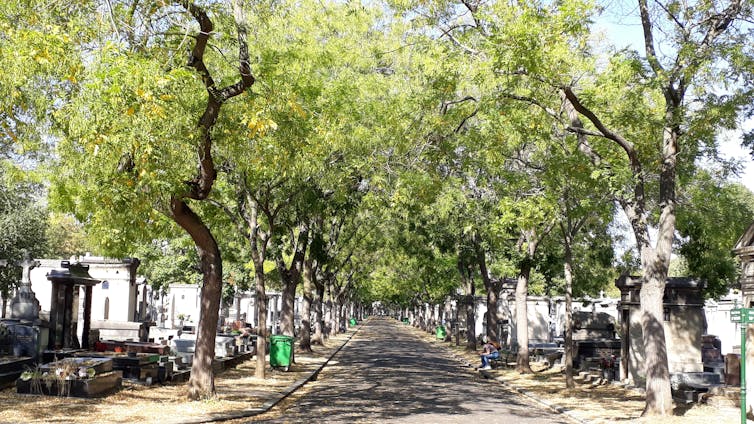
Reinforcement of woody plantations on certain squares, like what is proposed by the urban planning agency of the Tours agglomeration , can make it possible to increase the densities of the canopy and the associated ecosystem services. In Paris, this could be done, for example, in the Parc du Champ-de-Mars as part of the planned development of the Eifel Tower site after the 2024 Olympic and Paralympic Games.
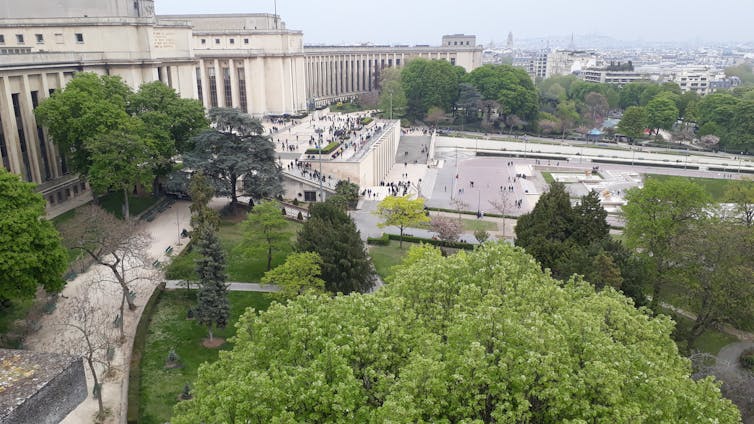
● Dense woody micropopulations
Resulting from plantations on small surfaces, of the order of a few tens, hundreds or thousands of m 2 , they can correspond to groves in squares or on town squares, even in the middle of dwellings or even within buildings. 'a hospital.
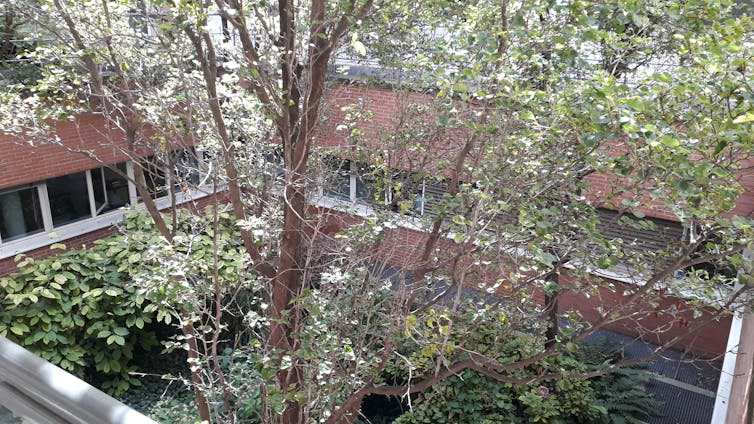
• Isolated trees and groups of trees
These are often trees remarkable for their age, their history, their identity (species or variety), their architecture and/or location; they are found in public squares or in private spaces.
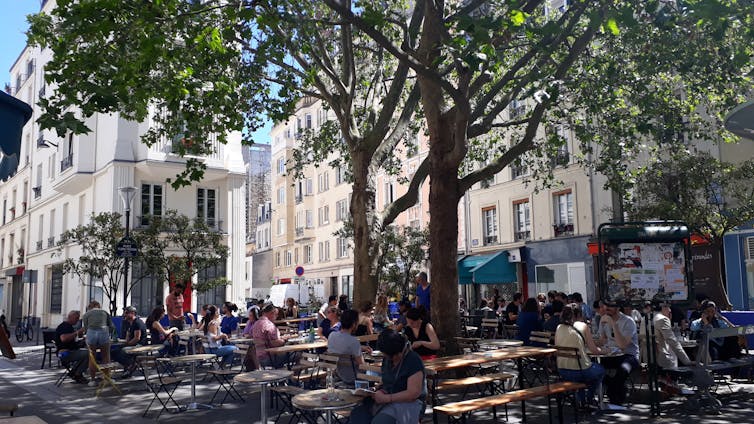
● Woody wastelands
They are the result of spontaneous recolonization by species that are often exotic, invasive (locust locust and acacia) but also native (sycamore maple, for example), on land of varying sizes that has been abandoned for decades; one thinks of the steep slopes of the small Parisian belt.
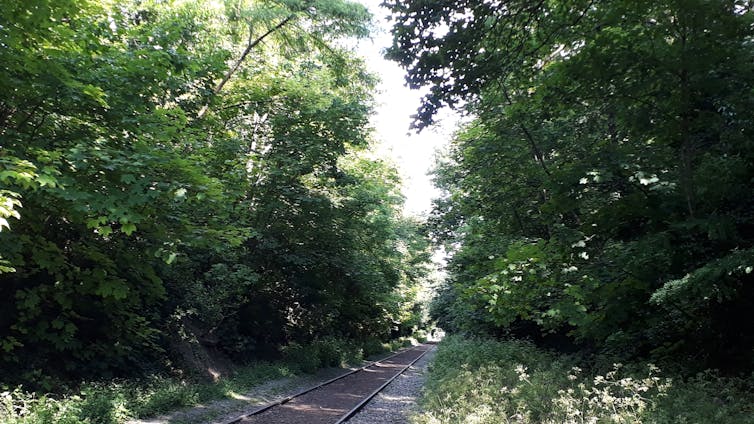
New forms of urban planting
The projects for the creation of a few large “urban forests” by the city of Paris over areas of several thousand m 2 are similar to surface woody plantations.
They constitute key operations, of aesthetic and emblematic interest, but only represent a relatively modest element in terms of the number of trees or surfaces concerned (for example, the planned planting of 2,000 trees over approximately 1 ha for the project of the Montparnasse tower ) in relation to the entire urban canopy.
The“Miyawaki microforests” , which are currently very fashionable, are to be linked to dense micropopulations. They can respond to an opportunity for dense planting on small spaces, such as the slopes of the ring road in Paris or abandoned spaces, or even the woody restoration of mineralized spaces.
The large number of woody plants introduced (about 3 per m 2 , or 3000 for a microforest of 1000 m 2 ) is often highlighted, but it is certain that the initial density of these plantations will be greatly reducedby the natural selection during stand growth.
Focus on complementarity and continuity
These different categories of tree stands complement each other in terms of the ecosystem services provided; all contribute to the richness and resilience of the global “urban forest”.
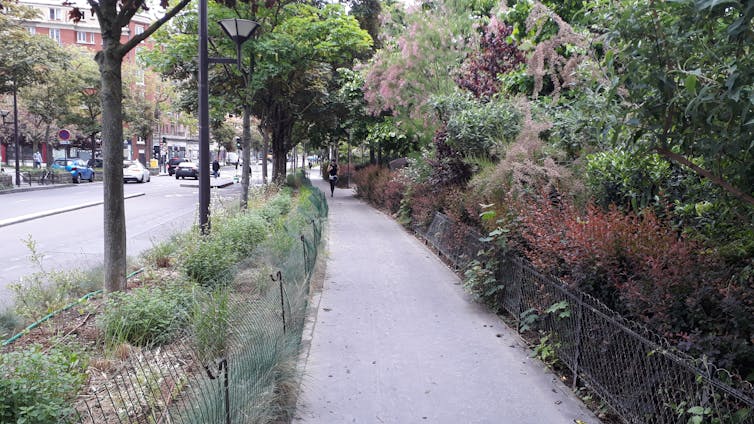
The tree layer is sometimes accompanied by shrubby and herbaceous layers, more or less abundant depending on the categories and the situations; these lower strata deserve and could often be much more developed to promote biodiversity.
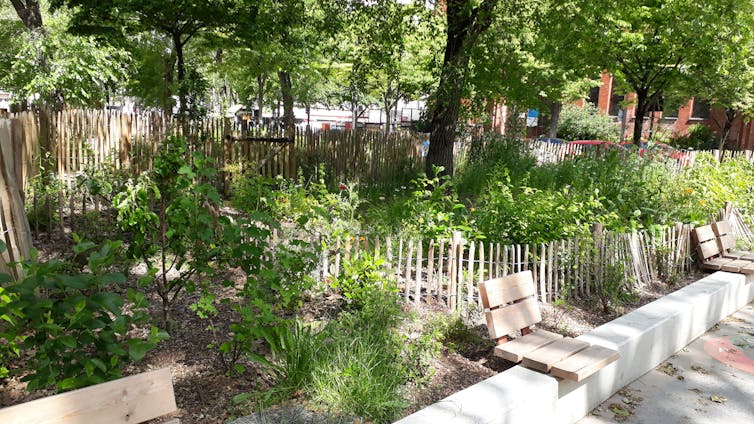
This “urban forest” can be made up of native species in the territory concerned and/or introduced exotic species, which are sometimes better adapted to the edaphic, biotic, sanitary and above all climatic conditions of the agglomeration in question. Prior experiments in arboretums, botanical gardens or urban parks should make it possible to be sure.
The spatial links and functional complementarities of all these woody units, whatever their categories, must ensure the ecological continuity of the tree stratum and the lower strata in the city, as well as their connections with the peripheral forests.
It therefore seems more desirable than ever to increase wood plantations in cities over the coming decades in order to create as continuous a wooded fabric as possible, necessary for the dissemination and enrichment of urban biodiversity, for the mitigation of urban heat waves as well as the contribution to the objective of carbon neutrality by 2050. ![]()
Serge Muller , Emeritus Professor, researcher at the Institute of Systematics, Evolution, Biodiversity (UMR 7205), National Museum of Natural History (MNHN)
This article is republished from The Conversation under a Creative Commons license. Read the original article .
